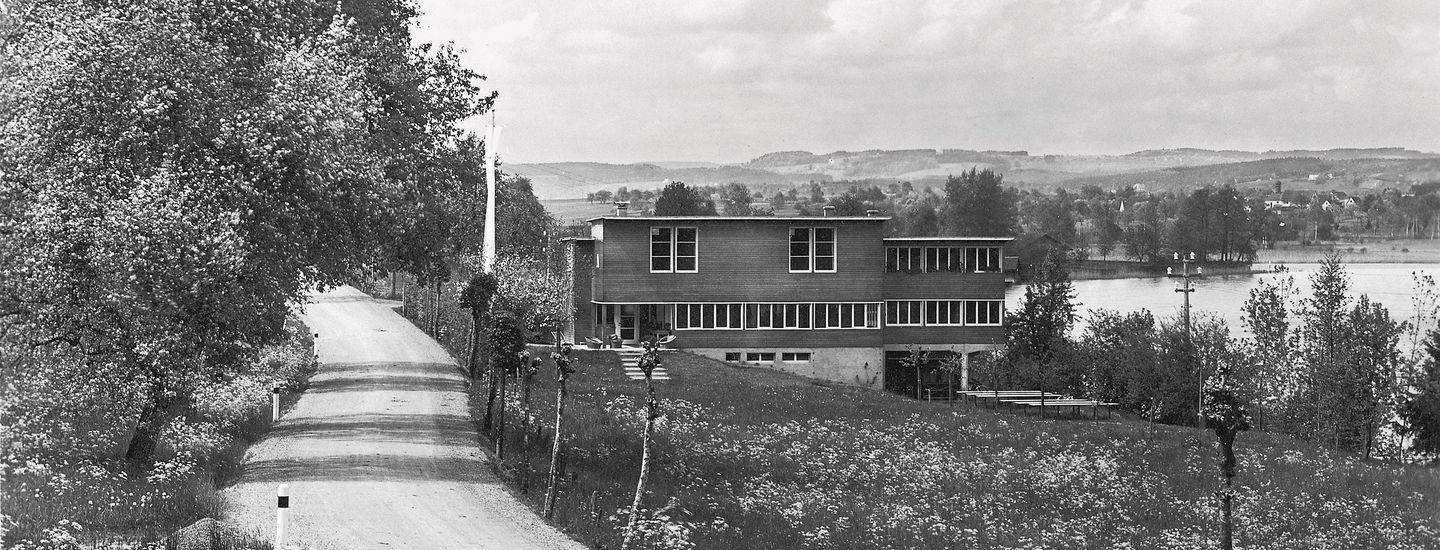
2010 to 2019
Strategic Sustainability
«This week, 24 young people from Kenya, Poland, the USA and Switzerland installed a 160 m2 photovoltaic system and a 60 m2 thermal solar system on St. Moritz Youth Hostel as part of the Greenpeace youth solar project.»[1]
Added value through partnerships
The term “sustainability” is defined much more broadly. In addition to environmental compatibility, this also includes the three equal pillars of social responsibility, economic efficiency and governance. As a result, SYH, as the organisation is known for short, is keeping its finger on the pulse and establishing itself as a non-profit organisation that balances the pursuit of social goals with the necessity of profitability.
Generating environmentally-friendly energy from the sun and sensitising young people to climate issues, is a combination that aligns with the principles of the youth hostels. A school class in Grindelwald has already installed a solar power system. However, it is not always easy to reconcile aspiration and financial reality. There are no big budgets for the necessary renovation work and upgrading the common rooms and bedrooms is a priority. Due to a lack of money, it is not always easy to give energy consideration the attention it needs.
However, as part of Hostelling International, the global youth hostels network, it is also important for the youth hostels in Switzerland to offer environmentally-friendly services at all levels. The premise is to conserve resources – this has been part of the organisation’s history since it was founded in 1924. This also includes believing in one’s own influence. Through its sustainability strategy, the Swiss Youth Hostels want to set an example for the Swiss tourism industry and motivate others to choose this path as well.
Local communities are also benefiting from these efforts. The solar energy generated by the St. Moritz photovoltaic system delivers up to 27,000 kilowatt hours of renewable electricity a year. This means that the annual demand from six four-person households or one sixth of the electricity consumed by the St. Moritz Youth Hostel can be covered. This sustainable energy production is an important component of the Energy City label for the spa region of Engadin.[1]
The Youth Hostel is for everyone
The sustainability strategy implemented by the Swiss Youth Hostels and the Swiss Foundation for Social Tourism aims to be broader. As part of the organisation’s commitment to social responsibility, travel should be possible for people with more limited financial means. With the pioneering «Barrier-free Youth Hostels» project initiated in 2012, the Swiss Youth Hostels Association and the Swiss Foundation for Social Tourism together with the Denk an mich Foundation are striving to achieve barrier-free holidays for all. Real inclusion includes not only structural measures, but also facilities such as a booking system for barrier-free services. A total of 34 of the 49 youth hostels will be barrier-free by the time they celebrate their centenary. The project, which was successfully completed in 2018, inspires the founding of the disability association Barrierefreie Schweiz (FVBS), which now aims to promote barrier-free measures throughout the Swiss tourism industry.[2]
The traditional services offered by the youth hostels also includes providing catering for guests. The aim is to provide balanced meals with ethically produced products. «I love being in the youth hostels so much because I know that everything is just right there. The food is not only good, but also meets my expectations from an ecological point of view; only safe materials are used throughout the building and the employees are treated decently. I find that pretty reassuring,» explains a visitor who regularly stays with her family at youth hostels all over the world.[3]
Sustainability has been central to the Swiss Youth Hostels since the very beginning. Today the wording is a little different than it was 100 years ago, but the aim is actually the same: «We want to continue to achieve the greatest possible cost-effectiveness, taking into account our values and objectives. We are concerned about sufficient liquidity, adequate reserves and a healthy capital structure. This serves to secure an organisation’s existence and the ability to meet the goals of civil society in the long term.»[4] This means that the numbers have to be right, but without thinking about profit, but in harmony with social responsibility. However, the Swiss Youth Hostels can only achieve this if the necessary support is available, be it from members, benefactors or the public sector. «Governance» was defined as a fourth pillar of the sustainability strategy. The aim is to create real added value.[5]
Creating added value through partnerships
What began in Locarno in 1997 with the first multifunctional youth hostel is successfully continued with the public-private partnership in Saas-Fee, centering around the idea of creating added value through partnerships. Opened in autumn 2014, the wellnessHostel4000 located in an alpine destination is a public-private partnership between the Swiss Foundation for Social Tourism and the civic community of Saas-Fee. After years of unsuccessful searches, the Swiss Youth Hostels finds a location for a new building in the Saas-Fee tourist region and the civic community of Saas-Fee also has the opportunity to convert the loss-making leisure centre into a professionally managed and operated wellness facility with indoor pool. The facility benefits all visitors to the destination as well as local residents. The partnership results in a world first for tourism: The first hostel with its own wellness facilities and indoor swimming pool. As the first modern, five-storey wooden hotel building to be built in accordance with the Minergie Eco Standard and supplied with energy from solar district heating and photovoltaics, the building has also received several awards as a beacon for environmentally-friendly construction in the Alps (Prix Lignum, Watt d’Or, Milestone). The wellnessHostel3000 in Laax is opened in December 2020, based on a public-private partnership with the municipality of Laax. In 2022, the WellnessHostel St-Luc supplements the Swiss Youth Hostels’ offer as a franchise operation.
[1] Cf. press release by Greenpeace Switzerland published 14 July 2010.
[2] Cf. denkanmich.ch/jugendherbergen
[3] Internal information: That’s what someone told me today at a conference for sustainable building … and then the word «eco», which is the icing on the cake of many YHs.
[4] Cited from www.youthhostel.ch/de/nachhaltigkeit/strategie/






Share this page